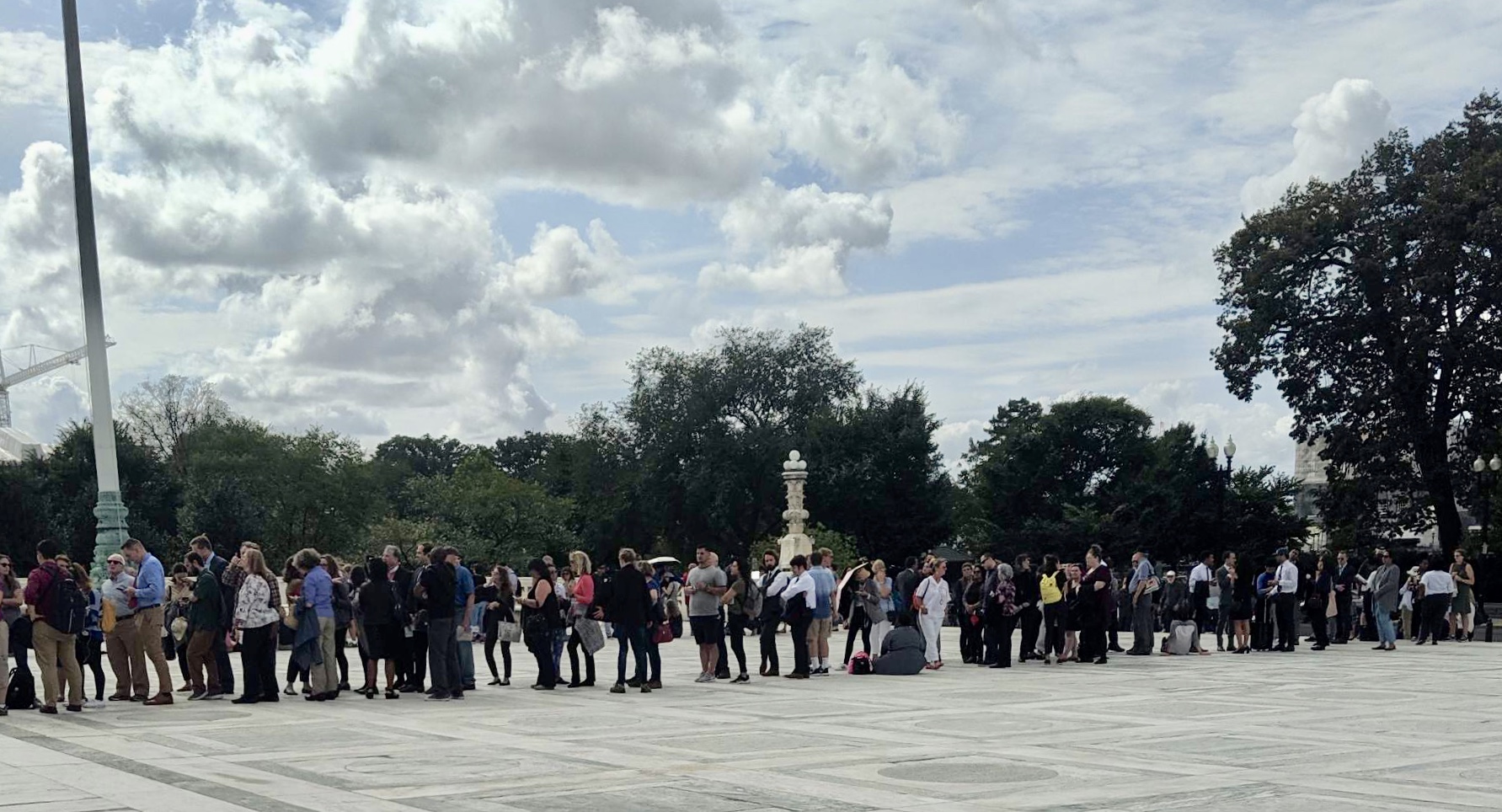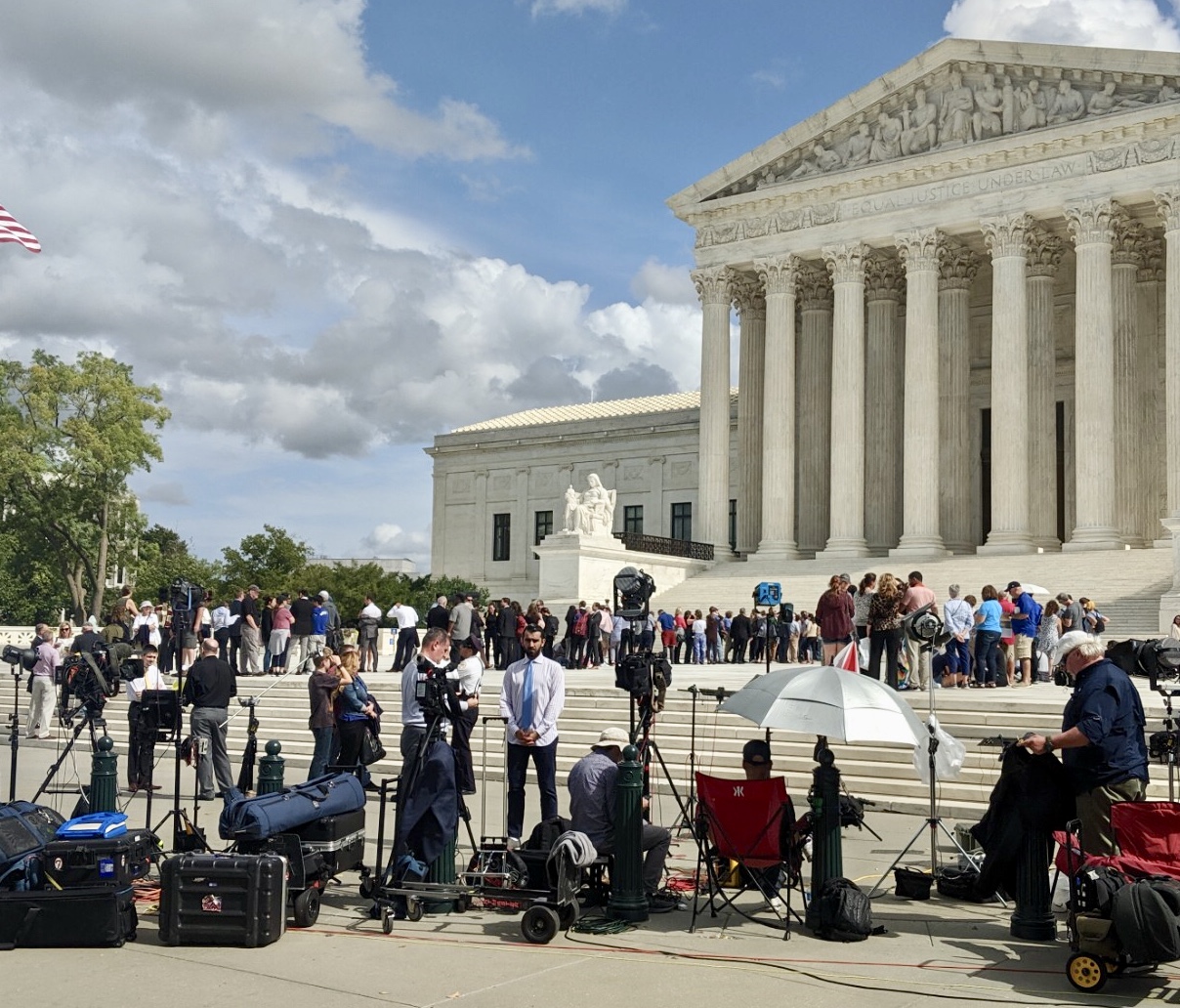The First Monday in Wait-tober
By Dylan Hosmer-Quint, Fix the Court research associate
The first step to seeing the Supreme Court in action is a 3:30 a.m. alarm.
 In fact, during my recent trip to the court on Oct. 7, the “First Monday in October,” when the court begins to hear cases again after a three-month recess, 3:30 was cutting it close. I arrived 45 minutes later to find more than 100 people already waiting in line. Luckily for me, about 20 were tourists who gave up and left shortly after I arrived, and 30 were already waiting for the next day’s argument. That put me at no. 65 in line, just close enough to make it in the building.
In fact, during my recent trip to the court on Oct. 7, the “First Monday in October,” when the court begins to hear cases again after a three-month recess, 3:30 was cutting it close. I arrived 45 minutes later to find more than 100 people already waiting in line. Luckily for me, about 20 were tourists who gave up and left shortly after I arrived, and 30 were already waiting for the next day’s argument. That put me at no. 65 in line, just close enough to make it in the building.
After arriving, I had more than five hours to wait before I could enter. That is standard. The cases I was hoping to see, one concerning the validity of insanity pleas and the other concerning attorney fees with U.S. Patent and Trademark Office, were both significant, but neither garnered national interest. To see the controversial Title VII cases, which were heard the following day, Oct. 8, the line started forming three days in advance. For concerned citizens on both sides of the issue, the case was of such importance that one, two, or even three nights of camping on the sidewalk were worthwhile to see the argument in real time.
Back to Oct. 7: the Supreme Court Police let in the first 50 people in line around 7:30 a.m. It was not until 9:30 that they came back out to let me in with a second round of people. The line only lengthened from that point forward. All down First Street NE — and spilling over onto East Capitol Street — people waited.

Of course, the vast majority of these people were not allowed to sit through the arguments. Instead, they waited for hours to cycle through the court’s “three-minute line,” which allows visitors to see a random three minutes of the proceedings.
Once inside, I was seated in the back but with a clear view of the proceedings. Watching the court in action is a striking experience. Justices are precise and pointed in their questioning and are well versed in even the most obscure aspects of the law. They often build off points made by other justices, even from justices of different political persuasions. Justice Kavanaugh asked for clarification after an attorney responded to a question from Justice Kagan, and later Justice Sotomayor did the same after a question from Justice Gorsuch.
The Supreme Court is the only branch of government that requires interested parties to go to such great lengths to see it in action. Congress, for example, can be viewed on C-SPAN. Most state supreme courts, and even some federal circuit courts, livestream audio or video of proceedings.
But to see the U.S. Supreme Court consider cases that will determine major questions from civil rights to religious freedom, one has to wait for hours or even days, potentially through the rain or snow. The cost of traveling, staying in D.C., and awaiting the argument are physical, mental and financial and altogether too great for many across the country.
As a result, most Americans will never have the opportunity to see their highest court consider the urgent political questions of our time.